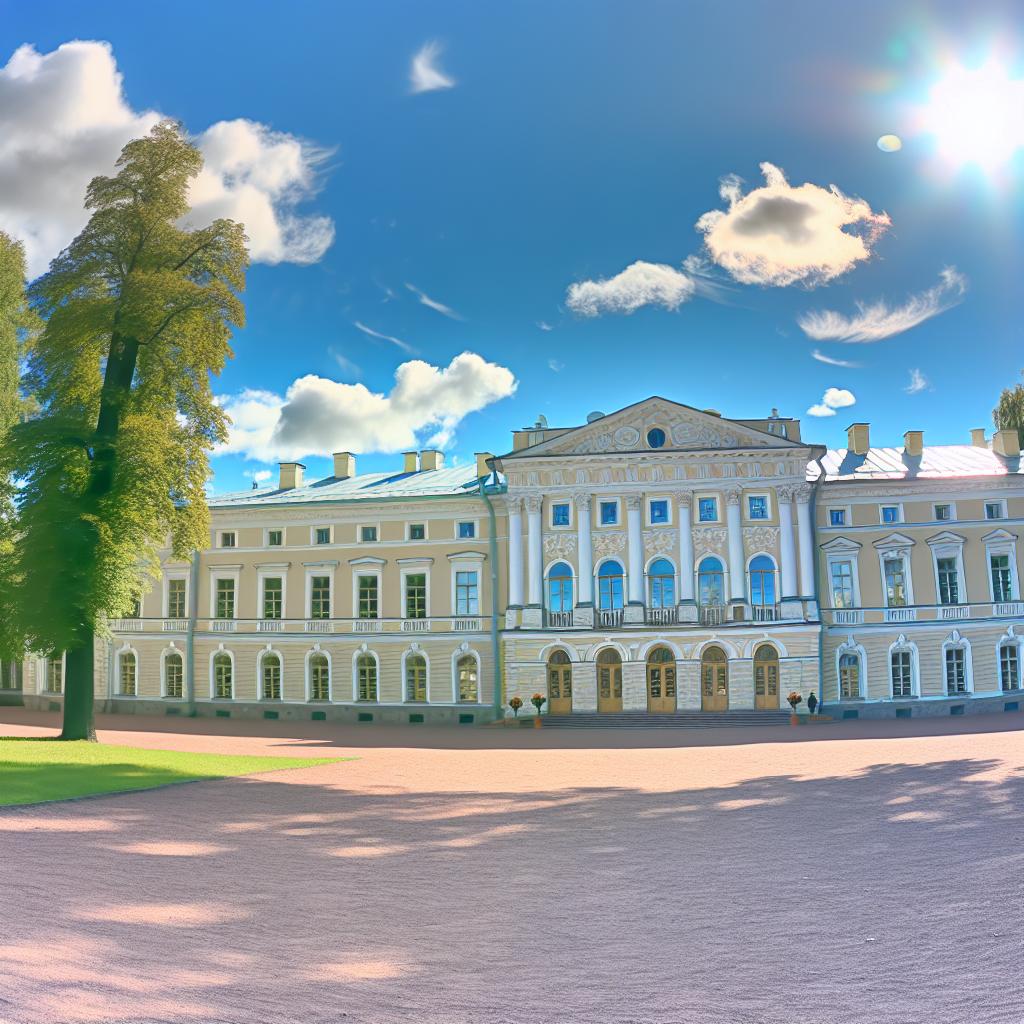Introduction to Pavlovsk Palace
Pavlovsk Palace is one of the notable architectural and historical gems located in Saint Petersburg, Russia. This impressive palace stands as a testament to the rich history and cultural heritage of the Russian Empire. Commissioned by Empress Catherine II for her son, Grand Duke Paul, the palace eventually became a cherished residence for various members of the Russian royal family.
Historical Background and Initial Construction
The story of the Pavlovsk Palace began in the late 18th century during the reign of Empress Catherine II, also known as Catherine the Great. The palace was initially built for her son, Grand Duke Paul, who would later become Emperor Paul I of Russia. Construction of this magnificent edifice commenced in 1781, under the keen supervision of the esteemed Scottish architect Charles Cameron. Cameron was renowned for his distinctive neoclassical style, which he skillfully infused into the design and structure of Pavlovsk Palace.
Architectural Influences and Development
Charles Cameron’s design was inspired by classical Greek and Roman architectural elements. His distinctive style is evident in the palace’s elegant columns and detailed friezes, which capture the quintessence of the neoclassicism period. Over the years, additional architects contributed their expertise and creativity to further develop the palace. Vincenzo Brenna and Andrei Voronikhin were instrumental in enriching the architectural heritage of Pavlovsk Palace, adding layers of complexity and beauty to its design.
Neoclassical Features and Interior Grandeur
The neoclassical design of Pavlovsk Palace distinguishes it from many other palaces of its time. It features majestic columns, pristine symmetry, and ornate decorative friezes. The beauty of the palace is not confined to its exterior alone; the interiors are equally magnificent. The palace houses a remarkable collection of furniture, paintings, and sculptures, each piece selected to mirror the style and tastes of the Russian royalties who once resided there.
The Pavilion and Expansive Landscapes
Pavlovsk Palace is complemented by the sprawling expanse of Pavlovsk Park, which covers an impressive area of approximately 600 hectares. As one of the largest landscaped gardens in Europe, the park provides a picturesque setting for the palace with its rolling meadows, winding streams, and tranquil lakes. The design of the park was crafted with an eye for natural beauty, drawing inspiration from the serene landscapes of the English countryside.
Picturesque Features and Structures
Within this vast park are numerous pavilions, ornate bridges, and quiet corners designed for relaxation and reflection. These structures are strategically placed to highlight the park’s natural beauty, enhancing its scenic charm and providing visitors with points of interest as they stroll through its pathways.
Artistic Treasures Within Pavlovsk Palace
The palace is not merely a residence; it is a repository of significant art and artifacts that reflect the tastes and interests of its former royal inhabitants.
Furniture and Craftsmanship
The palace showcases an exquisite array of antique furniture, much of which was crafted by renowned artisans of the time. Each piece in the collection exemplifies the intricate craftsmanship and design sensibilities appreciated by the Russian aristocracy.
Art Collections: Paintings and Sculptures
Within its galleries, Pavlovsk Palace holds a vast collection of paintings and sculptures. These works, acquired by Russian royals during their European travels, offer a glimpse into the artistic trends and cultural exchanges of the era. Each piece not only adds to the aesthetic appeal of the palace but also serves as a historical marker of the periods of its acquisition.
Tapestries and Luxurious Textiles
The opulent textiles displayed throughout the palace are illustrative of the luxury and elegance enjoyed by the royal family. Tapestries adorn the walls, showcasing craftsmanship and artistic skills that were highly valued in the decoration of royal residences.
Current Status of Pavlovsk Palace and Visitor Information
Today, Pavlovsk Palace functions as both a museum and a cultural heritage site. Visitors to the palace have the opportunity to explore its richly decorated rooms and enjoy a variety of art exhibitions. Additionally, the palace regularly hosts cultural events within its grandiose halls, providing a lively venue for artistic and historical engagement.
Visitor Experience and Park Access
The surrounding Pavlovsk Park remains a favored destination for both locals and tourists. It acts as a peaceful retreat from the bustling city, offering a sanctuary for relaxation and contemplation amid nature’s splendor. The park’s extensive network of paths invites visitors to leisurely explore its many natural and man-made wonders.
Preservation and Ongoing Restoration Efforts
Efforts to preserve the architectural integrity and historical significance of Pavlovsk Palace are ongoing. Continuous restoration projects are in place to ensure that both the palace and its collections are maintained for future generations. These projects involve meticulous attention to detail to preserve the original artistic and architectural intentions laid out by its creators. Through these dedicated efforts, Pavlovsk Palace continues to stand as an enduring symbol of Russia’s rich historical and cultural legacy.

